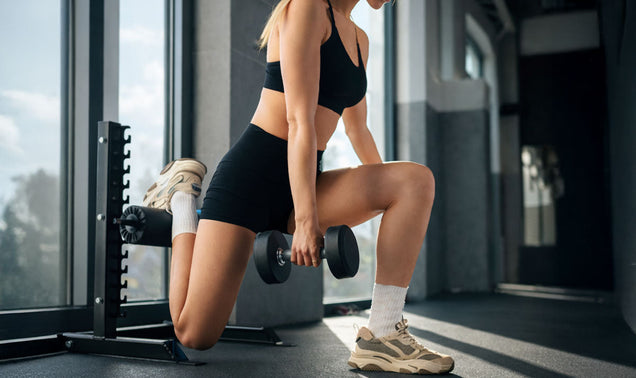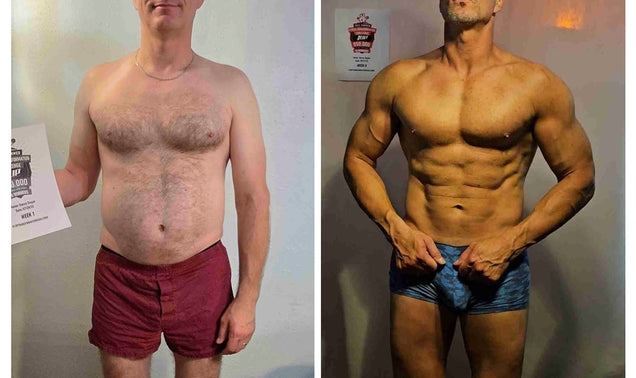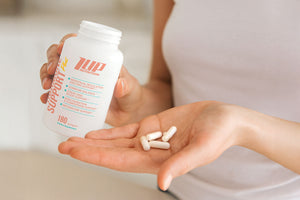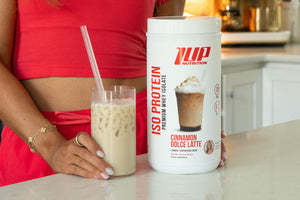Reverse dieting is a technique used by bodybuilders, physique athletes, and transformation challenge winners to gradually “rebuild” their metabolism after a prolonged and aggressive phase of dieting, such as that required to compete at a high level in a physique show.
If you’ve heard of reverse dieting and are curious if it’s right for you, then read on to learn about everything you need to know about the benefits of reverse dieting.
Let’s start with the basics.
What is Reverse Dieting?
Reverse dieting occurs following a long, intense diet to reacclimate your body to its “normal” calorie intake. When reverse dieting, you gradually increase your calorie intake over several weeks to boost metabolism, help restore normal calorie burning, and limit fat gain as you start to eat more food.[1]
How Dieting Affects Metabolism
The human body is fascinating -- it’s equipped to perceive, encounter, and adapt to any/all manner of stress, be it physical, psychological, environmental, etc. However, even the modest genetically-gifted specimen can only adjust so far.
Extreme and/or prolonged calorie cuts (>20% deficits) have a vastly different effect on your metabolism compared to small-to-modest changes (10-20% deficits). Prolonged and aggressive calorie reductions can eventually result in a lowering of your body’s resting metabolism (RMR).
The reason for this is that prolonged, aggressive calorie reductions can be perceived as a “threat” to your body’s survival mechanisms. Our bodies respond to this threat (increased energy output + decreased energy input) by reducing total daily energy expenditure (TDEE).
Reverse dieting can help to “rebuild” the body’s metabolism while avoiding unwanted fat gain following increased calorie intake.
How to Start Reverse Dieting?
After a physique competition or transformation challenge in which you’re reducing calorie intake for many weeks, the body craves calories (in any way, shape, or form). Immediately jumping up to your pre-competition diet may lead to increased fat gain, which can lead to frustration, feelings of self-consciousness, and yet another long-term diet, since the body wants to replenish its depleted fat reserves.
By slowly and methodically increasing daily calorie intake over the course of several weeks, you may be able to help limit fat gain while also supporting a healthy metabolism.
In other words, reverse dieting may be able to maintain your current body weight while also consuming a greater amount of calories than it previously did. Slow, incremental increases in weekly calorie intakes are typically better tolerated by the body than abrupt large increases in calorie intakes.
Additionally, reverse dieting may help you to experience greater natural energy, increased performance in the gym, and support strength gains...all while minimizing fat gain!
Here are the steps to start reverse dieting:
Know Your Current Calorie Intake
Before you can start increasing your calorie intake, it’s imperative to know where you currently stand. The 1UP Fitness App offers insight into your daily calorie needs and requirements. You can also track your current calorie/macronutrient intakes and see where you stand compared to the recommendations.
Generally speaking, the vast majority of people overestimate how many calories they’re burning during exercise while underestimating how many calories they’re consuming each day. Our top-rated fitness app tailors calorie needs based on your goals (fat loss, muscle gain, body recomp, etc.).
Gradually Increase Calorie Intake
To start reverse dieting, experts recommend increasing calorie intake by 50-100 calories above current calorie intake each week and assessing how body composition, feelings of energy/mental clarity, etc. progress.
Protein intake should remain relatively consistent (~1 gram per pound of bodyweight) -- the best sources of protein include:
- Lean beef
- Poultry
- Fatty fish
- Shellfish
- Eggs/egg white protein
- Greek Yogurt
- Cottage cheese
- Plant-based protein
- Whey protein powder
As you gradually increase your calorie intake, it’s also important to track your progress, using one or more of the following:
- Daily/weekly weigh-ins: day-to-day fluctuations in body weight are normal, but keeping a record of your average weekly weight gain/loss is helpful
- Track body measurements: waist, hips, thighs, biceps, etc. can reflect changes in body composition better than only relying on a bathroom scale
- Take progress photos -- coupled with body measurements and regular weigh-ins, progress photos can offer additional insight into body composition changes than solely relying on a weight scale
- How are your workouts? -- are you lifting heavier weights for more reps? Are you recovering more quickly between sets? Etc. These markers can help you to understand how your reverse diet is progressing.
- Assess energy levels, hunger, and digestion: these subjective markers offer further feedback as to how your slowing increasing calorie intake is affecting daily living
When to End Reverse Dieting
It can seem confusing when you should end a reverse diet; however, all you need to consider are a few things. Common practice indicates that it’s time to end a reverse diet if:
- You have gained more body fat than you are comfortable with
- You’ve lost interest in reverse dieting (or tracking macronutrients/calorie intake as meticulously as you have been)
- You have been reverse dieting longer than you were dieting to begin with
On the flip side, you may continue with your reverse diet if:
- You have not gained a significant (physically observable) amount of body fat
- You don’t mind the amount of body fat you’ve gained.
- You’re still interested in eating more than you are currently
Takeaway
Reverse dieting involves slowly and meticulously increasing daily/weekly calorie intakes. For physique competitors, bodybuilders, and influencers, this may be important. However, for fitness enthusiasts and gym rats, it’s not important. The added lifestyle stress of tracking every miniscule increase in protein, carb, and fat intake isn’t necessary or worth the added time investment, lifestyle stress, and minute benefits it may offer.
For everyday “joes and janes,” simply returning to your regular TDEE is more than adequate -- you’ll replenish glycogen, improve workout performance, reduce cravings, and experience greater mood & sleep.
Finally, remember that reverse dieting requires experimentation. Don’t be afraid to tweak, modify, increase or decrease your reverse dieting protocol as life circumstances and preferences evolve. And, if you ever get stuck, don’t forget to reach out! Our team of expert coaches are always available to help guide and motivate you to help you achieve your best goals ever!
References
- Trexler ET, Smith-Ryan AE, Norton LE. Metabolic adaptation to weight loss: implications for the athlete. J Int Soc Sports Nutr. 2014;11(1):7. Published 2014 Feb 27. doi:10.1186/1550-2783-11-7






